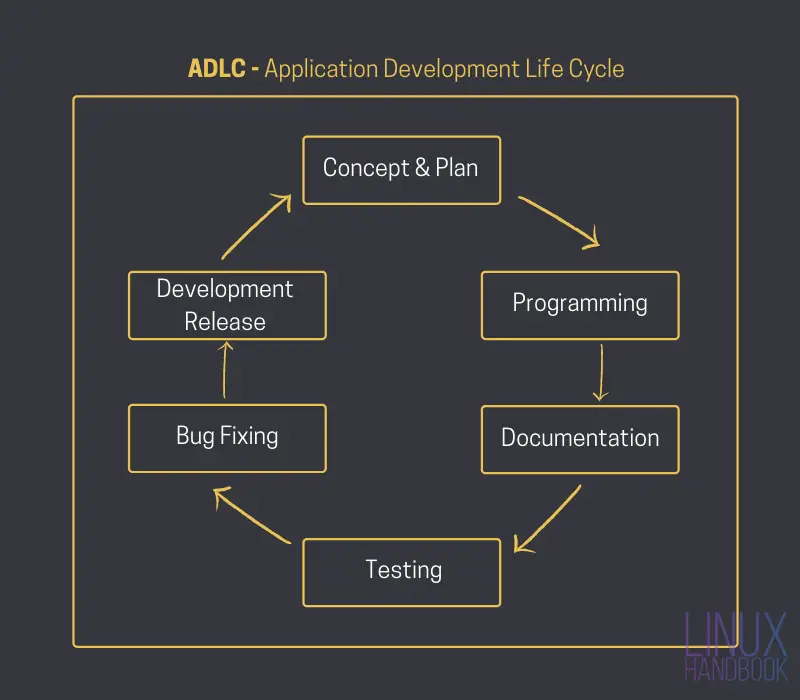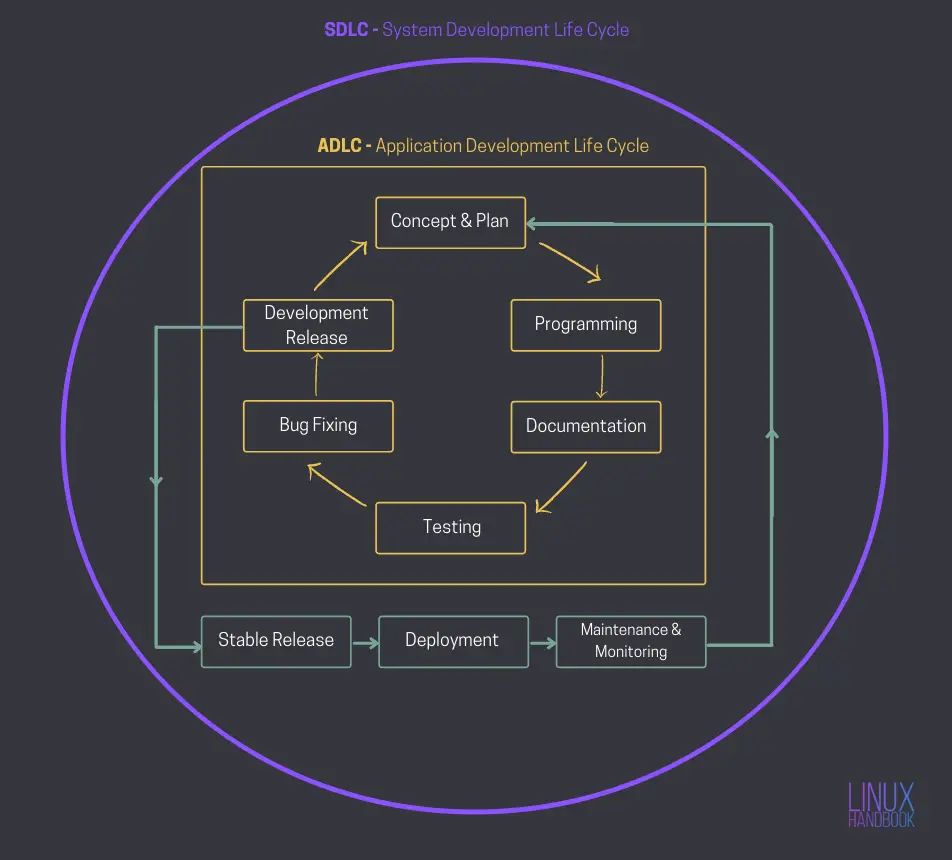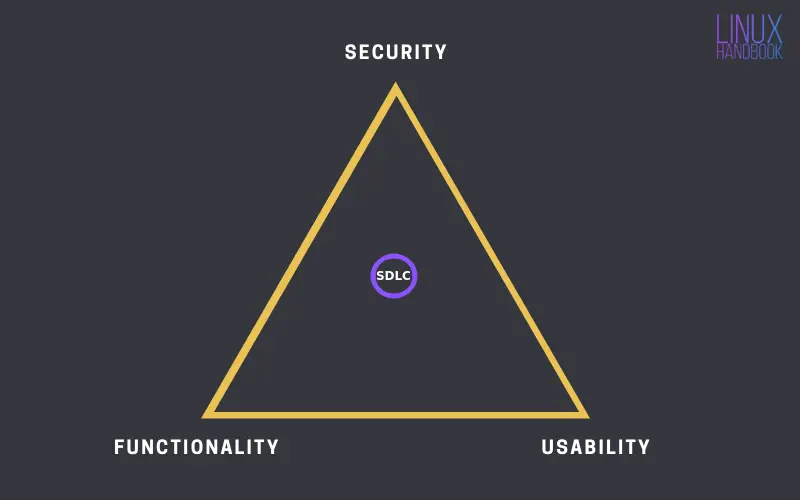Rethinking DevOps
An unusual series. Here's a theoretical approach to a new model you can adopt that simplifies how those DevOps tools we talk about can be made and managed by the DevOps community.

Ever since I started working with diverse web-apps at Linux Handbook and High On Cloud, the DevOps term has grabbed my attention many a time since that is something we specifically cover at Linux Handbook.
We've covered tutorials on many tools related to DevOps but we've never really tried to explore the actual concept in depth. Since Linux Handbook is dedicated to Linux Servers, we also need to explore their important role in the DevOps field.
But before we do so, it is essential to understand what DevOps really is. DevOps is an extremely popular buzzword and you will find multiple definitions of it across the web. But based on my own experiences, I have arrived at the following conclusive definition and thoughts henceforth. This is an attempt to revisit existing DevOps norms and rethink them in the form of a new model that I propose here.
What is DevOps?
DevOps is a continuous simplification process of maintaining a delicate balance among functionality, usability and security of an application both in terms of its Development and Operations.
How to ensure that?
Ensuring that an application evolves efficiently while also being operational is a continuous challenge for DevOps Engineers. To do that, the most fundamental components of DevOps need to be continuously monitored.
Application Development Life Cycle (ADLC)
Creating a new application? You start right here!

Application Development Life Cycle is the fundamental motivation behind the development of any application. Unless the development process is not carefully and consistently monitored, you cannot be absolutely sure of its flawless development. An application will always be under ADLC until it is production ready.
ADLC is an essential software engineering principle which consists of six essential stages. The development of an application involves the following steps:
- Concept Plan: Shaping the core idea behind the application.
- Programming: This is when the application is created and developed.
- Documentation: An excellent application is useless without careful (human readable) documentation.
- Testing for Quality Assurance: Making sure the end product is functional, usable and secure.
- Debugging: Bugs reported during testing are fixed.
- Development Release: The first version of the application is released.
Until and unless a stable release is available, this cycle will continue to exist. Once a software is released as a production-ready stable version, it no longer falls under ADLC. It eventually falls under System Development Life Cycle (SDLC).
System Development Life Cycle (SDLC)
A part of our DevOps community might say that both ADLC and SDLC are one and the same. But in the real-world scenario, what I see is ADLC and SDLC are quite different.

System Development Life Cycle is the fundamental motivation behind both the development and operation of an application. It involves the continuous development of the application after its first stable release and ensures its continuous operability.
- Concept Plan: Revisiting the core idea behind the application.
- Programming: This is when the application is further developed.
- Documentation: Continuous update of human readable documentation.
- Testing new releases for quality: Making sure the new end product is functional, usable and secure.
- Debugging: Bugs reported during testing are fixed.
- Development Release: For a new application(version-wise or as the app itself), a development release evolves into its first stable release in this stage.
- Stable Release: The latest stable version is released as a product with fixes related to bugs/security along-with new features.
- Deployment: The stable product is deployed on server(s).
- Maintenance & Monitoring: Consistent and periodic monitoring of servers and the applications that run on them.
A community powered open model will always have smoothest maintenance. The last step in the cycle is truly achievable only with an Open Source model. It is the greatest deciding factor in terms of the evolution of any application.
An application that does not yet have a stable release cannot be regarded as completed. As soon as an application is completely built, ADLC evolves into SDLC. Why?
- ADLC is purely a Development Model
- SDLC is both a Development and Operations Model
Do you get my point now? Under ADLC, an application is not production ready, which is why it would still be under barebone development. Therefore, we cannot call it DevOps. Only when the first stable release is out, it evolves into SDLC which is DevOps because a production-ready application will then onwards become continuously operational.
As it is evident from the two abbreviations and the diagram above, an application is very different from an entire system. An application is but a part of a complete systemic process. This is what differentiates SDLC from ADLC. So, ADLC is actually a subset of SDLC.
SDLC needs to be continuously pivoted by us as a community, keeping in mind the delicate balance among functionality, usability and security.
Presenting the new DevOps Triangle

This diagram is never the same because SDLC is never stationary. It is SDLC that is being continuously pivoted within the triangle by the community based on the continuous feedback of developers, testers and users.
Such a pivoting process is ever-changing according to the requirements of the application under deployment. This ever-changing model in the real world is the process of DevOps.
Where SDLC lies within the triangle will always vary from application to application. The pivoted location is actually dependent on the nature of the application under deployment while being developed with a close eye on:
Functionality: The primary function of the application. For example, the ability to send messages via Rocket.Chat.
Usability: The ease of use of the application. For example, how conveniently you can send messages via Rocket.Chat.
Security: Degree of security of the application. For example, a bug fix that addresses a Rocket.Chat vulnerability such as this one.
A diverse community that backs an Open Source application need to always maintain a delicate balance among functionality, usability and security.
But how actually?
Humility in the Workplace: Ultimate Precision in Pivoting
At the end of the day, developers, users and testers are all human. Be it local or virtual, DevOps cultures and workplaces need to adopt the simple idea of compassion. A workplace that practices kindness among co-workers is bound to enhance both ADLC and SDLC productivity!
It's not just about web-apps, it's about people as well. They are the ones who are continuously creating, deploying and maintaining them. That is what community is all about and this is why DevOps is also a culture. The DevOps culture spans around managing not only a web app but also the people who make it a reality.
An Open Source approach makes this entire process far more achievable than a proprietary one. This is what I have felt while working with this collective system of people, practices and technology.
I look forward to continue sharing my thoughts in this genre through a series of articles to follow. What I feel is, be it a small, medium or large-scale enterprise, DevOps is applicable everywhere but in the form of personified models.
This is just a small part of what I'm eager to explore through this series. Please share your thoughts in the comments section below. Thanks for visiting Linux Handbook!
About the author
DevOps Geek at Linux Handbook | Doctoral Researcher on GPU-based Bioinformatics & author of 'Hands-On GPU Computing with Python' | Strong Believer in the role of Linux & Decentralization in Science